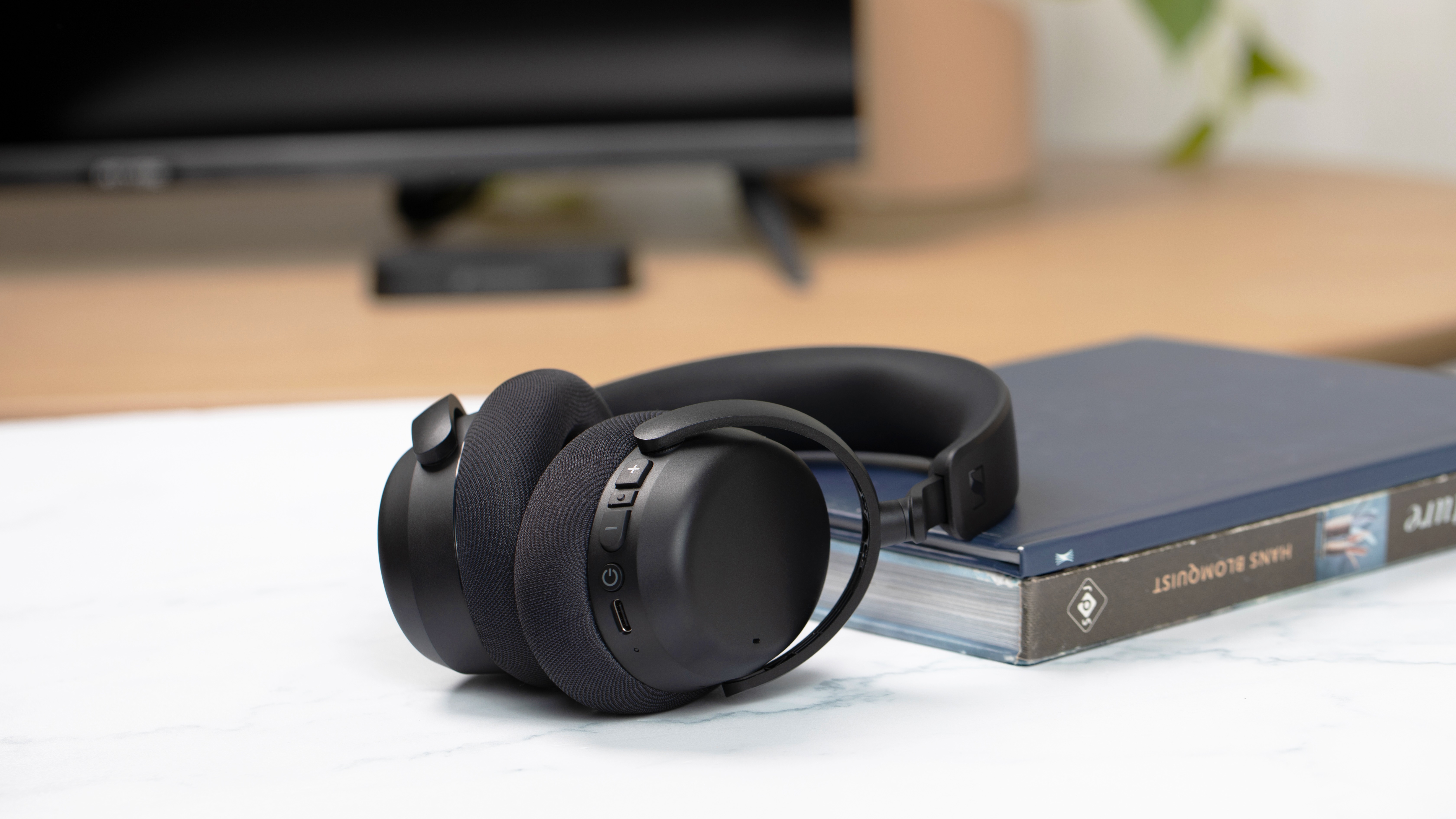What Hi-Fi? Verdict
With its broad array of features and talents, the OLED808 really is all things to most people
Pros
- +
Dynamic but balanced picture
- +
Good sound by prevailing standards
- +
Ambilight and strong gaming features
Cons
- -
Some motion processing peculiarities
- -
Only two HDMI 2.1 sockets
- -
Missing UK catch-up apps
Why you can trust What Hi-Fi?
Over the last few years, Philips has produced some of the very best OLED TVs to grace our test rooms. It was with great sadness, therefore, that we learned back in August that the brand’s first 2023 model, the OLED808, would not only miss our annual Awards deadline but indeed wouldn’t make it into the UK until at least October.
The problem? Some sort of licensing issue between Google TV and Freeview Play was the reason given, with Philips apparently not wanting to launch the TVs in the UK without the full suite of terrestrial channel catch-up services.
Unfortunately, that issue hasn’t been resolved and the OLED808 has to do without the BBC iPlayer, ITV X and Channel 4 apps. Fortunately, though, the TV is now available and, having subjected it to our rigorous, comparative testing process, we can confirm that it’s a corker.
Price
At launch, the 55-inch OLED808 was priced at £1800 (around $2300 / AU$3400). That was a bit of an issue – its main rivals, most obviously the Sony A80L and LG C3, had already been available for some time and so had been discounted to well below the OLED808’s launch price.
Thankfully, this issue has been rapidly addressed and the OLED808 has already dropped to £1399 (around $1785 / AU$2655), which means it's roughly on par with those rivals mentioned. In fact, at the specific time of writing, the Philips is £100 cheaper than both the Sony A80L and LG C3 in the UK (it’s not available in the US or Australia). Prices are very volatile at the moment, though, so it’s probably best to think of all three models as coming in at essentially the same price.
The OLED808 is available in a variety of sizes ranging from 42 inches (that’s Philips’ first 42-inch OLED) all the way up to 77 inches, but it’s the 55-inch version that we’ve tested for this review.
Design
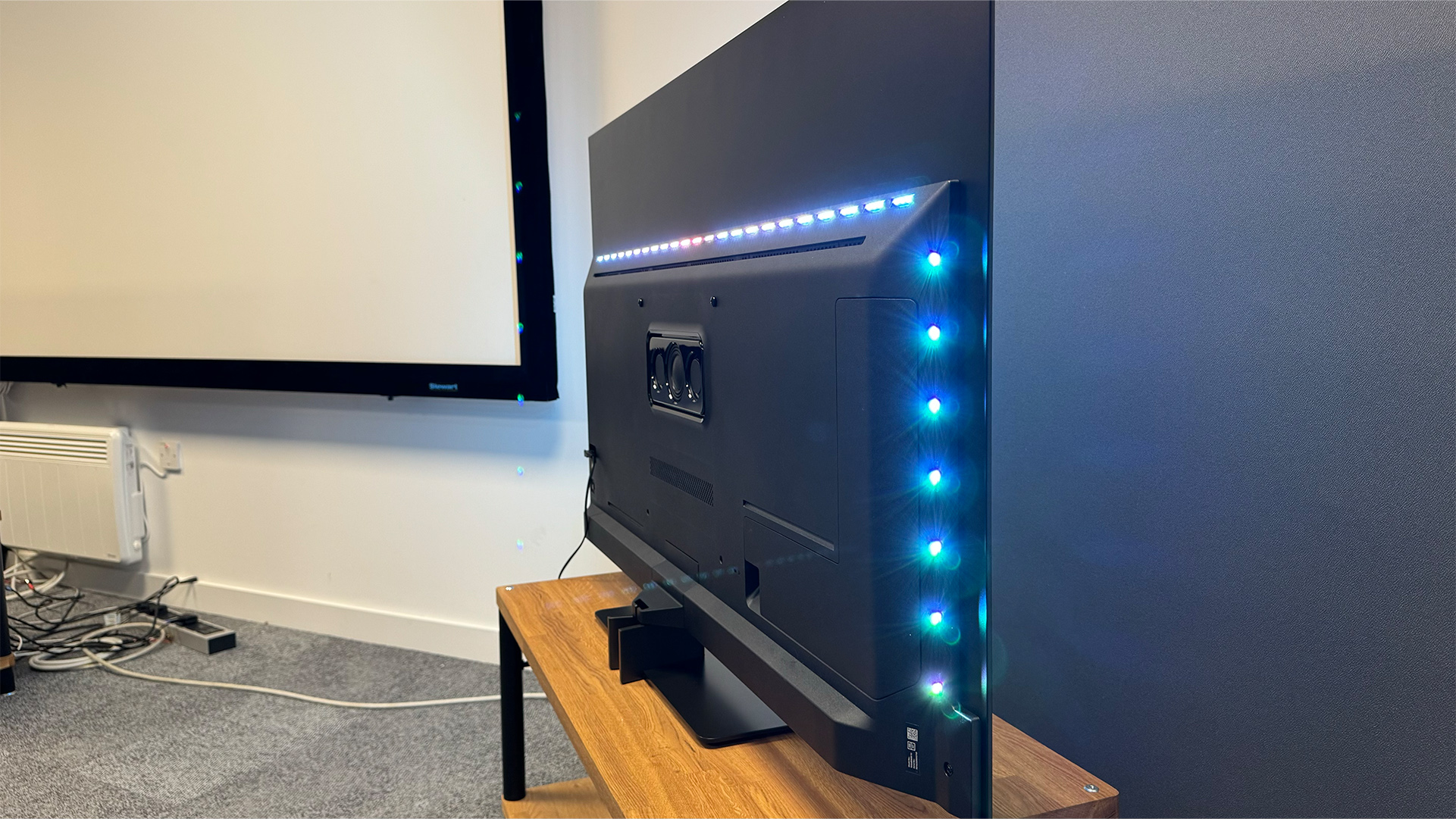
The main chassis of the TV looks very similar to that of the OLED807, and that’s no bad thing. It combines super-slim panel areas with a plastic enclosure that’s slimmer and sleeker than many in this class, and it feels solidly made.
The latest hi-fi, home cinema and tech news, reviews, buying advice and deals, direct to your inbox.
The stand is entirely new, though, with Philips having transitioned from the striking but somewhat awkward T-bar of the OLED807 to a more practical pedestal that has a usefully compact footprint and allows the set to swivel. OLED TVs don’t have the viewing angle issues of their backlit counterparts, but being able to swivel the screen can still be useful, not least when it comes to swapping cables in and out.
The stand lifts the TV a reasonable way above the furniture upon which it’s placed, too, and it doesn’t protrude much further than the bottom lip of the screen – both factors that make soundbar placement a more straightforward affair than it is with some rivals. Although the sort of feet that Philips used to use (and that Sony still does) are generally even more accommodating of a soundbar.
Features
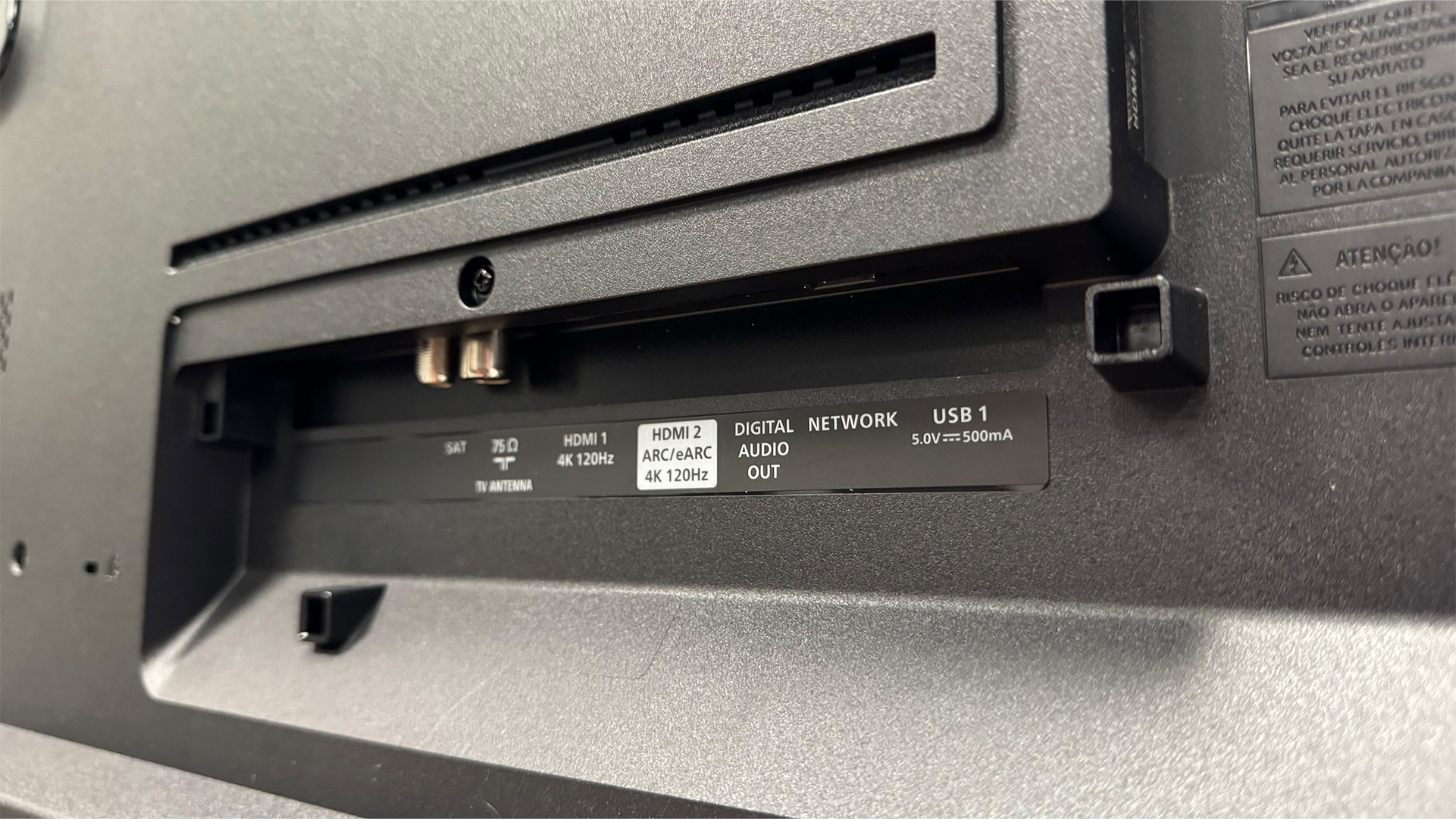
The rear of the Philips OLED808 actually has quite a lot to tell us about its features. The most obvious thing is that it’s got bright, coloured LEDs dotted around three sides of the plastic section. As anyone who has experienced a Philips TV at any point over the last ten or so years will be able to tell you, those LEDs are the core components of the Ambilight system. This can be used to create bias lighting, which some people appreciate for its eye strain-relieving and/or contrast-enhancing properties, or to dynamically extend the on-screen action onto the wall around the TV in the form of coloured light.
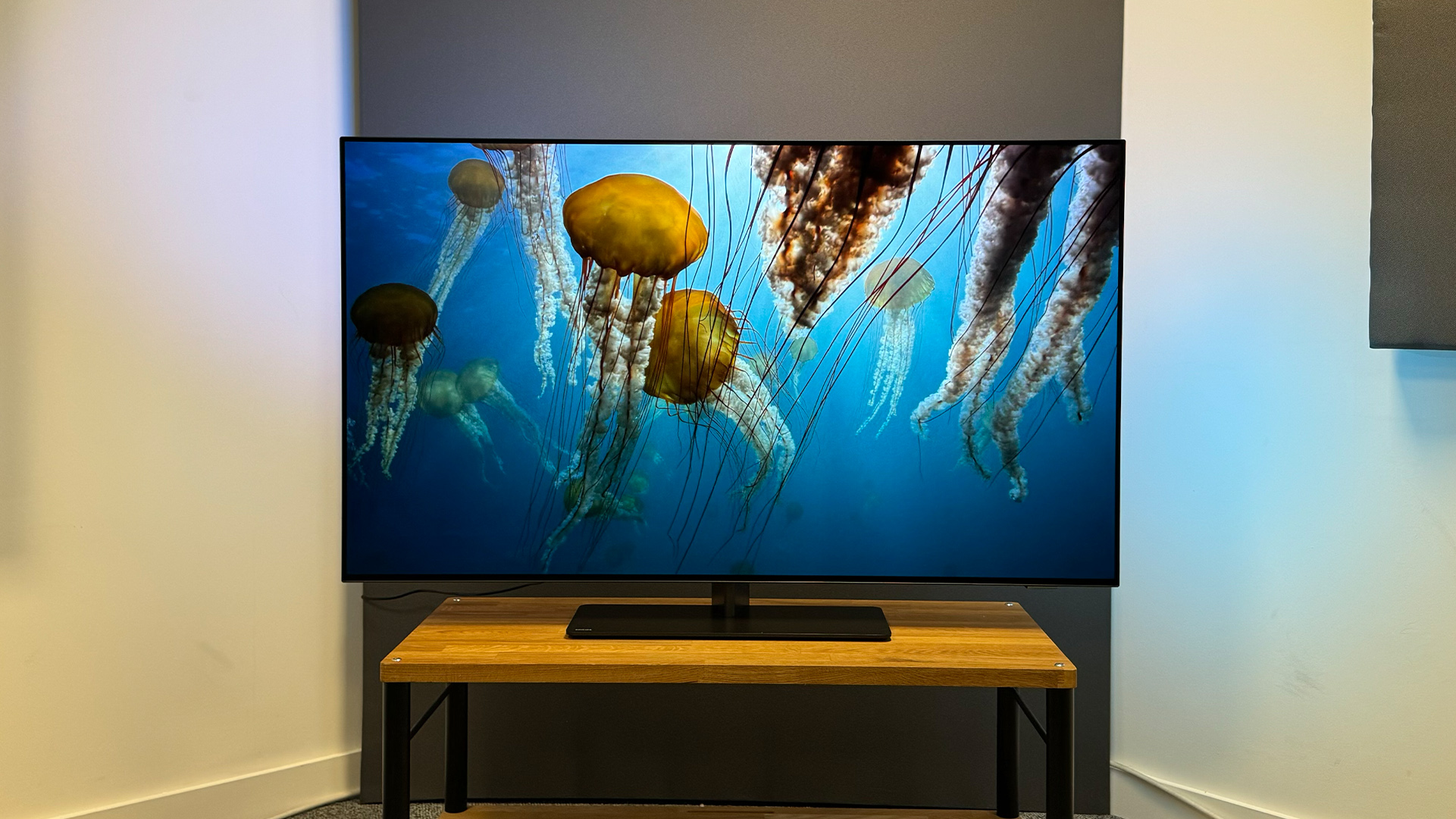
Screen size 55 inches (also available in 42, 48, 65 and 77 inches)
Type OLED
Backlight n/a
Resolution 4K
HDR formats HLG, HDR10, HDR10+, Dolby Vision
Operating system Google TV
HDMI inputs x 4 (2 x 48Gbps HDMI 2.1)
Gaming features 4K/120Hz, VRR, ALLM, Dolby Vision gaming
ARC/eARC eARC
Optical output? Yes
Dimensions (hwd, without stand) 71 x 123 x 6.8cm
The latter application is most commonly used and most attractive to Ambilight fans, and the OLED808 uses the ‘Next Gen’ version of Ambilight that Philips introduced last year, which is brighter and capable of recreating more hues, at once improving both the spectacle and accuracy of the system. To some, Ambilight is a distracting light show, but to others, it’s a key reason to buy a Philips TV over any other. Hardcore Ambilight fans might be disappointed to learn that integration with Hue smart lighting is not supported by new Philips TVs.
Also around the back of the TV, slap-bang in the middle of the plastic section, is a large subwoofer which, along with hidden stereo speakers, forms a 2.1 sound system rated to a claimed 70W. As you would expect, Dolby Atmos is supported.
Finally on our tour of the OLED808’s revealing behind is the array of connections, which includes four HDMIs, two of which are HDMI 2.1 certified to the current maximum-available data rate of 48Gbps. As is the norm for TVs with two HDMI 2.1 sockets, one is also the eARC port, which you will want to use to connect a soundbar or AV amplifier, should you choose to add one, leaving you with just one top-notch HDMI with which you can take full advantage of a games console’s or gaming PC’s advanced features. Philips used to offer a unique workaround to this common problem by offering standard ARC via the other three HDMI sockets (so you could get at least compressed Dolby Atmos via them) but alas, this workaround is not available for the OLED808.
Philips does provide something of a consolation, though, in that the two standard HDMI 2.0 sockets do at least support ALLM and VRR up to 60Hz, with only 4K/120Hz being restricted to the HDMI 2.1 sockets. The HDMI 2.0 sockets of most rivals don’t support VRR at all. For what it’s worth, all three current formats of VRR are on board, so that’s AMD FreeSync (Premium in this case), Nvidia G-Sync and standard HDMI VRR.
Another boon for Xbox Series X gamers is support for Dolby Vision gaming right up to 4K/120Hz. This is still something of a rarity outside LG’s OLED range.
Dolby Vision is also of course supported for movies and TV shows, as is rival dynamic HDR format HDR10+, as well as the ‘static’ HDR formats of HLG and standard HDR10.
As you can probably tell, Philips really is doing its very best to cover all of the bases, which probably explains why it was so reluctant to release the OLED808 in the UK without the full set of catch-up apps. That is a shame, for sure, but it’s at least fairly easily and inexpensively overcome through the addition of a streamer such as the Chromecast with Google TV. The fact does remain that that shouldn’t be necessary.
The smart platform is otherwise very well appointed, though, with support for the likes of Netflix, Amazon Prime Video, Apple TV and Disney+, with all content supporting Dolby Vision, HDR10+ and/or Dolby Atmos when it should. Discovery+ (the new home of TNT Sports, previously BT Sport) and Now are both on board, so live sport is covered, and you can even stream your Steam games right through the TV via the GeForce Now app.
These apps are all accessed via the Google TV operating system, which isn’t as slick as the bespoke systems of LG or Samsung but is pretty straightforward in use and does a decent job of directing you to content you might like. Google TV also runs faster and more fluidly here than it does on many rivals we’ve tested, including the Award-winning Sony A80L.
One reason for this snappiness could be Philips’ new 7th Gen P5 AI processor, which powers the OLED808. As the name suggests, this includes AI technology that Philips claims ‘processes images in a manner similar to a human brain’ and delivers ‘lifelike detail and contrast, rich colour and smooth motion’. The new processor also brings with it a new menu system that is a little more responsive and intuitive, though it still lacks the cohesiveness of LG’s 2023 TV menus.
What you don’t get with the OLED808 is MLA technology or a fancy heatsink – you’ll need to step up to the OLED908 to get those – but Philips says that this more mainstream model does use the latest OLED EX panel from LG Display and that the set is capable of hitting a peak brightness figure of around 1000 nits.
Picture
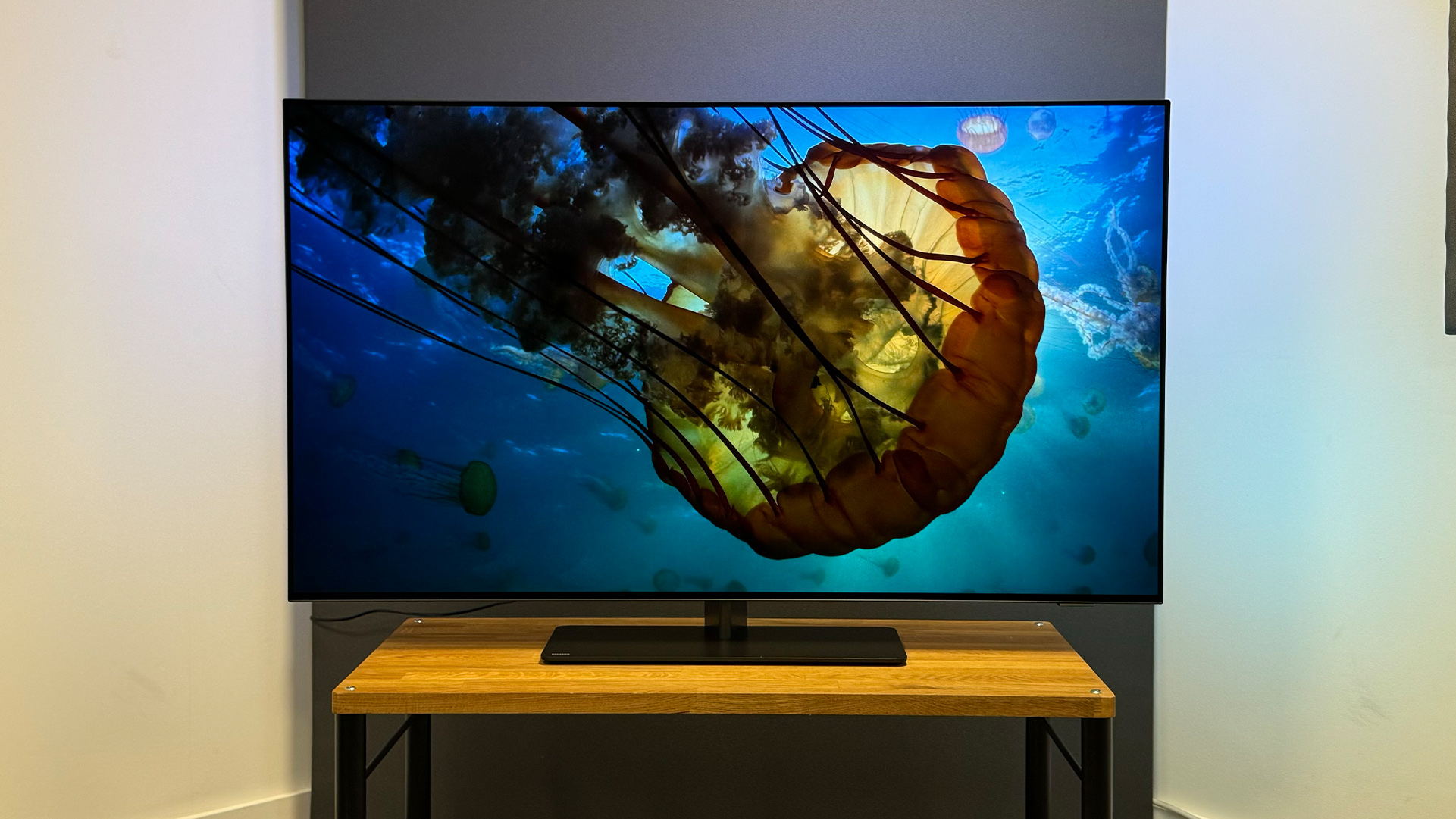
Kicking off with The Creator in Dolby Vision, the first decision to be made is which picture preset to use. As is often the case with Philips TVs, this decision isn’t as straightforward as it probably should be.
The most true-to-the-source-material setting, at least theoretically, is the Dolby Vision Filmmaker Mode. This is the first time we’ve encountered such a mode, but it broadly takes the same approach that a Dolby Vision Dark mode does on other sets by minimising picture processing and offering an approach to colours and contrast that’s designed to deliver the creative intent when watching in a dark room. However, we find this preset a little too dull, even when viewing in a pitch-black room. We find that’s also the case with the Dolby Vision Dark mode of some rival sets, including the Sony A80L.
With the Sony A80L, you can simply switch to the Dolby Vision Bright preset and more or less be done with it, so well is it implemented, but the OLED808’s Dolby Vision Bright mode adds too much distracting processing, most noticeably in the form of aggressive motion processing and over-sharpening.
Thankfully, you can adjust individual settings within the Dolby Vision Bright mode, and we hope that buyers make the effort: once the motion processing has been switched to Pure Cinema or Movie (more on which below), the Light Level Optimisation, Dark Detail Optimisation and Colour Temperature Optimisation features have been switched off (though you might want to make use of these if you watch movies in varied lighting conditions), Texture Enhancement is turned off and Sharpness Enhancement is dialled down (phew!), the OLED808 produces a beautiful picture.
Even with those sharpness-enhancing features turned off, the Philips’ picture is a little more crisply defined than that of the Sony A80L, which is itself a very sharp performer. The Creator’s fascinating dystopian vistas are rendered with depth-enhancing solidity but without any realism-busting exaggeration creeping in.
Detail levels are exceptional, too, with the set digging up specific blades of grass and fine skin blemishes with no trouble at all and again without exaggeration. The intentional film grain is reproduced as it should be, too, and doesn’t become distracting as long as you avoid that extra sharpening we reduced earlier.
Philips TVs of old could be guilty of boosting colours in a way that, while not exactly garish and certainly not unpleasant, didn’t always look truly authentic, but the OLED808 is cinematically warm and rich but also very well balanced. We’re not quite talking Panasonic MZ980 levels of colour accuracy here, but the OLED808 is close and avoids the slightly blue coolness that creeps into the brightest parts of the Sony A80L’s picture.
Despite remaining authentically warm in tonal balance, the OLED808 delivers bright highlights with excellent impact. It’s close to the Sony A80L in this regard and certainly more impactful than the LG C3. At the same time, subtle shading is handled fairly expertly. There’s none of the slight clumsiness to colours and contrast that you get from the Samsung S95C.
The scene in the troop transport towards the start of The Creator demonstrates another key strength of the OLED808; its shadow detail. It’s even better than the Sony A80L in this regard, more readily revealing neat touches such as the tear that rolls down Colonel Howell’s cheek as she recalls the decidedly brutal circumstances of her son’s demise. The Sony A80L’s blacks are a little more forcefully delivered, which does add an extra degree of drama in some scenes, but the Philips is more revealing without giving the sense that it’s digging up picture elements that were supposed to remain buried.
Switching to Blade Runner 2049 in HDR10, we opt for the HDR Filmmaker Mode but add some contrast enhancement to get a little more pop from the picture. Again, the performance that the OLED808 delivers is packed with detail, super-solid, and nicely balanced in terms of contrast and colours.
We do notice some minor issues in its handling of motion, though. Most of the time, the Movie motion processing mode is excellent, smoothing and sharpening panning shots without adding fizzy edges to less predictable motion or the dreaded soap opera effect. It does, though, add some very peculiar stutter in places we’ve never seen it before, such as the steam rising from the kettle in Sapper Morton’s farm. While not always obvious, this strange behaviour is occasionally distracting enough for us to avoid the Movie setting entirely and instead opt for Pure Cinema, which isn’t as smooth in its delivery but doesn’t have the same odd issue.
Back to the good stuff, and the OLED808 proves to be a talented upscaler of non-4K content, delivering decent detail and edge definition without much in the way of noise or fizz so long as you again avoid the more aggressive elements of Philips’ active processing.
Sound
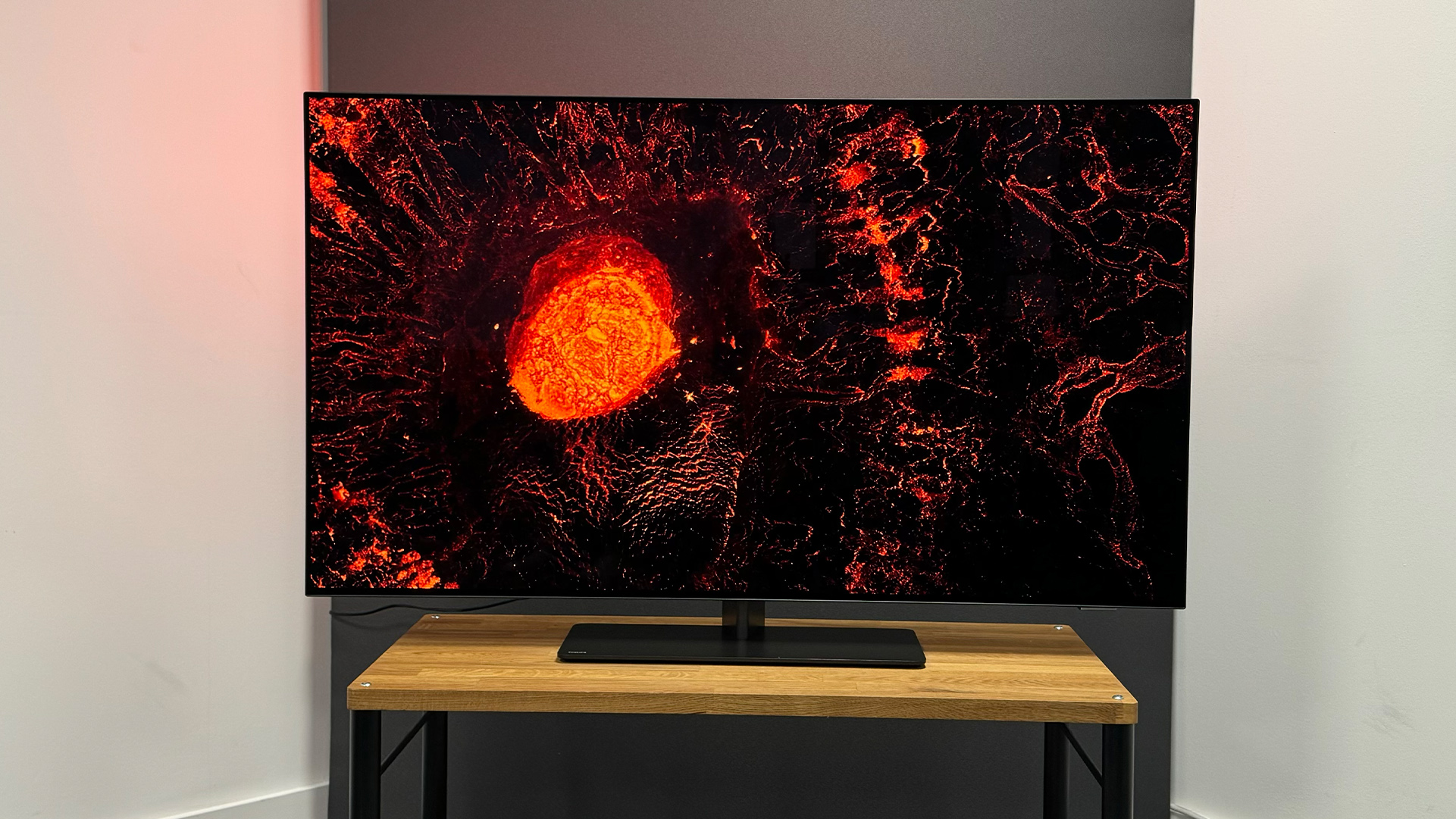
Back to Blade Runner 2049, the OLED808 proves to have good sound by the standards of TVs at this level. It’s quite well-balanced tonally, with reasonably deep and tuneful bass for a modern TV. And, unlike the vast majority of rivals, it doesn’t get even slightly flappy at the start of chapter two.
Clarity is good for a TV and dynamics are decent, too, but the OLED808 doesn’t have the subtlety in terms of detail or low-level dynamics that the Sony A80L has, and it’s nothing like as spacious or three-dimensional in its delivery. Still, it sounds comfortably better than the LG C3.
Of course, whether you buy any of the OLED TVs mentioned above, we recommend that you add a dedicated sound system, even if it’s an entry-level model such as the Sonos Beam Gen 2 soundbar.
If you do buy the OLED808 and are determined to use its built-in speakers, we find the Original sound setting to be the best overall. The Entertainment setting is arguably more impactful but it’s also a little too insistent, with a little harshness creeping in from time to time.
Verdict
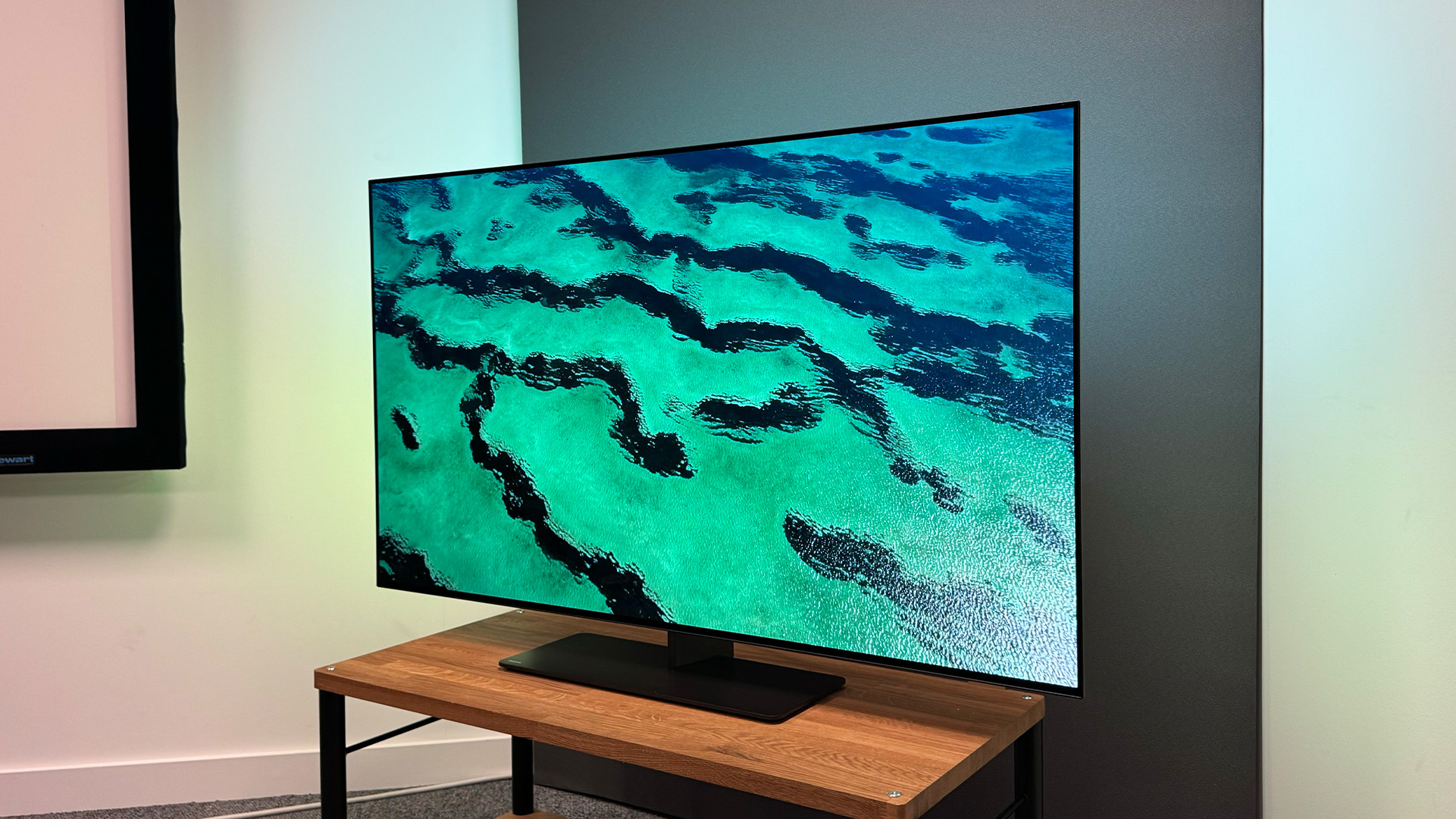
The effort that Philips has put into the OLED808 is clear to see: the company has gone out of its way to support all of the latest gaming features and every HDR format; it has seemingly squeezed every drop of performance out of its ‘standard’ OLED panel while still delivering cinematic authenticity; it has managed to produce good sound from speakers that you can’t see (at least from the front); and it has continued to offer Ambilight while keeping the price in line with rivals, none of which have an answer to that unique Philips feature.
It’s of course a shame that the BBC iPlayer, ITV X and Channel 4 apps are all missing, but in the face of so much quality that doesn’t feel like something worth dwelling on. If you’re in the UK and in the market for a new mid-range OLED TV, you simply must consider the Philips OLED808.
SCORES
- Picture 5
- Sound 4
- Features 4
MORE:
Also consider the Sony A80L and LG C3
What about Panasonic? Check out our Panasonic MZ980 review
And here are all of the very best TVs available right now
Tom Parsons has been writing about TV, AV and hi-fi products (not to mention plenty of other 'gadgets' and even cars) for over 15 years. He began his career as What Hi-Fi?'s Staff Writer and is now the TV and AV Editor. In between, he worked as Reviews Editor and then Deputy Editor at Stuff, and over the years has had his work featured in publications such as T3, The Telegraph and Louder. He's also appeared on BBC News, BBC World Service, BBC Radio 4 and Sky Swipe. In his spare time Tom is a runner and gamer.
- Lewis EmpsonSenior Staff Writer

